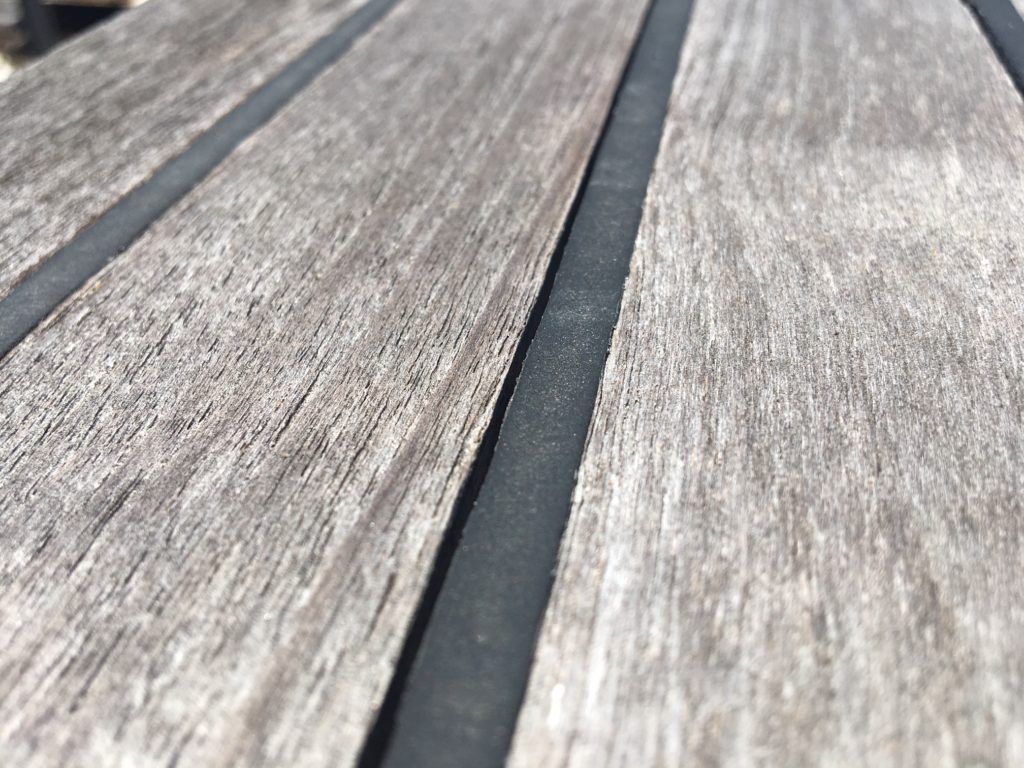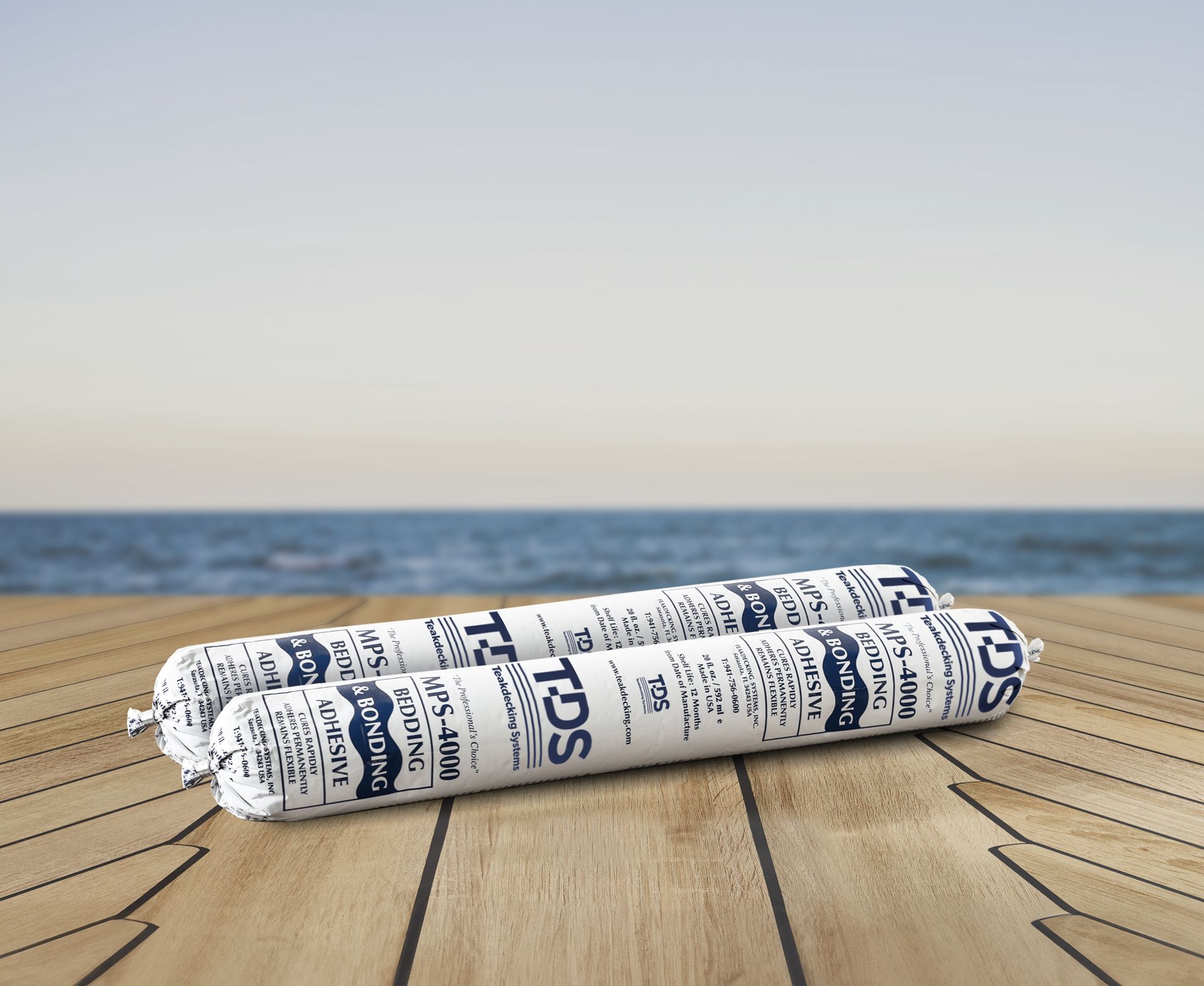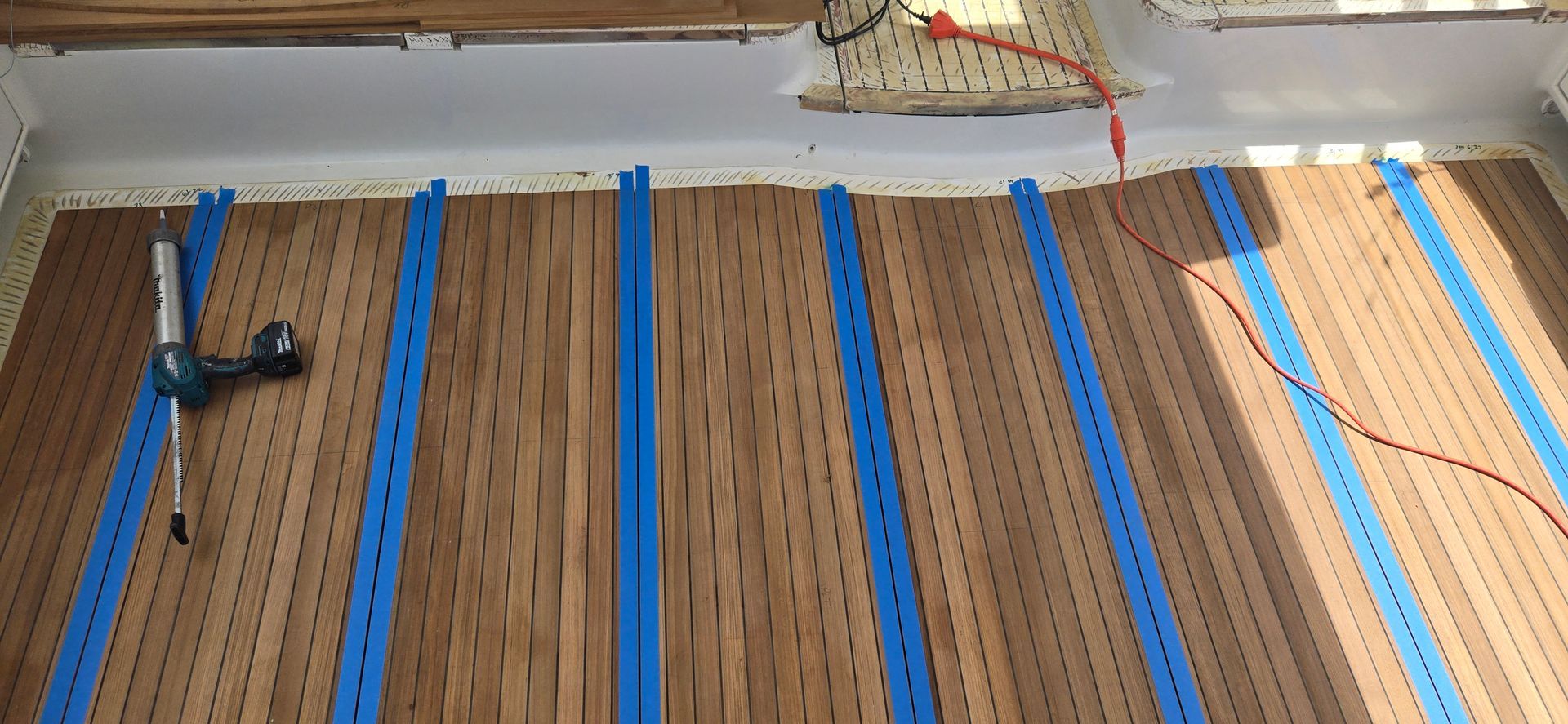Sanding a Teak Deck
Sanding a teak deck is part of a vessel’s maintenance program. So it’s essential to know why to sand, when not to sand, and how to sand.
WHY SAND A TEAK DECK?
The primary reason for sanding a teak deck relatively smooth is to allow moisture and contaminants to run off the decks rather than become entrapped on the deck surface.
Teak, like all woods, can decay. The softwood between the grain lines wears and deteriorates faster than the hardwood of the grain lines. As a result, the wood develops a raised grain or rough surface.tionships with all the yards—they all know us, so that helps simplify a lot of situations,” he adds.
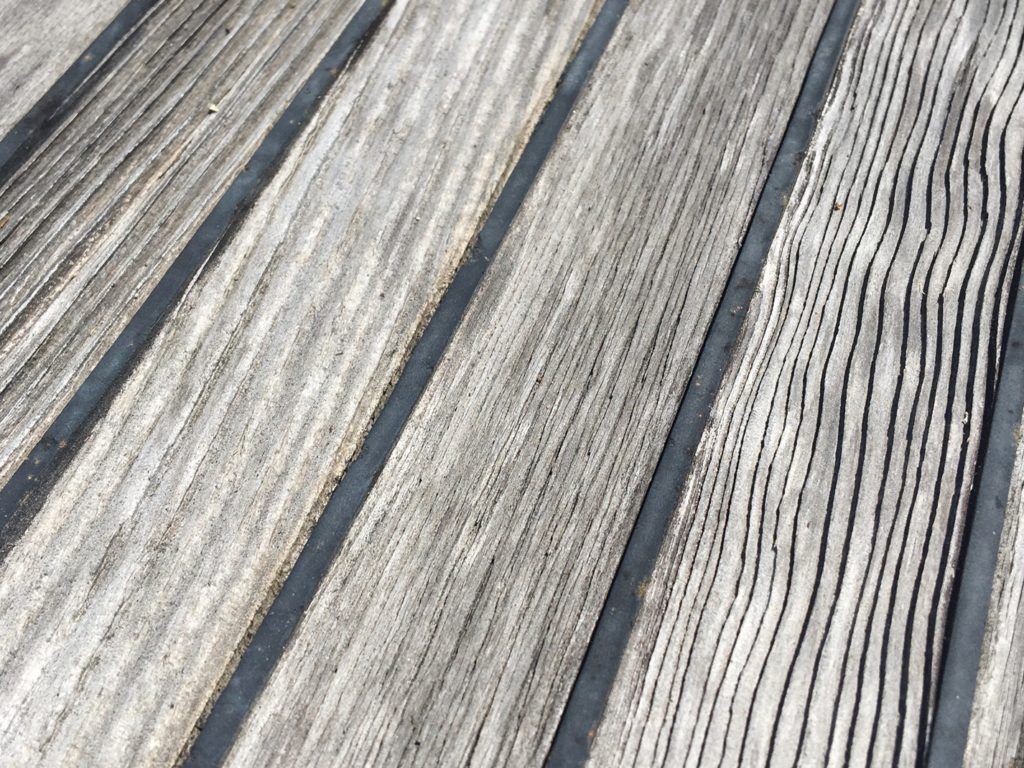
Extreme Ridges of Teak Decking Battens
Ridges trap rainwater and air pollutants in the valleys between the ridges rather than running cleanly off the deck. Note that when rubber caulking is proud on the teak deck surface, it can have the same effect. In the valleys, the decay process accelerates for softwood because it stays wet longer.
Another reason for sanding is to remove stains that are resistant to quality teak cleaners.
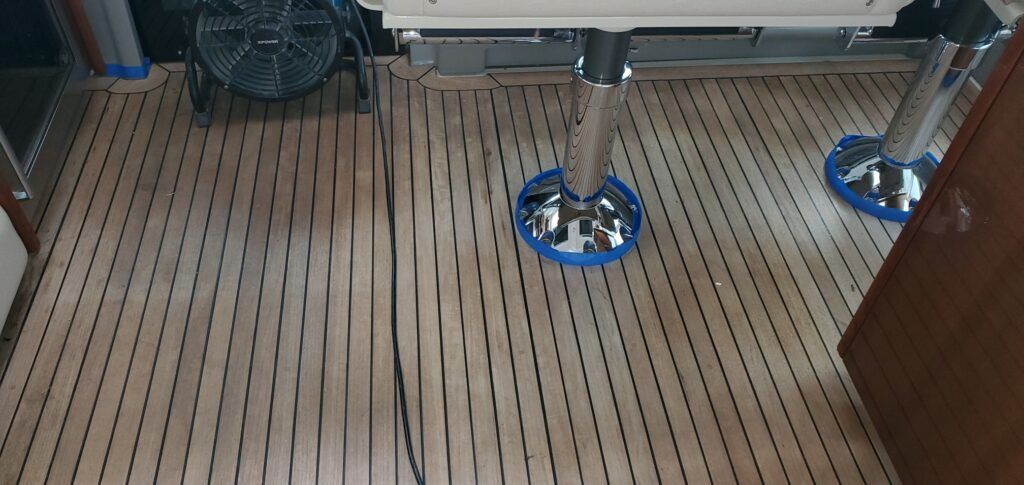
Before Sand-Out
WHEN NOT TO SAND
Sanding will make teak decks as smooth as possible within the limits of safe traction underfoot. But there are some cases where sanding is not the correct next step. Before starting a deck sanding project, the first two steps are to determine (1) the current thickness on the teak deck and (2) the remaining depth of the caulk seams. If the caulk seams are too shallow, the caulk will not stick to the sidewalls of the teak groove because there is not enough surface area to form a good bond. Sanding a deck with shallow seams will lead to caulk seam failures by further reducing seam wall surface area.
If the seams are shallow, but the deck is a traditionally laid deck with rabbeted seams, there may still be enough teak thickness below the seam to cut the seams deeper and then recaulk them before sanding the teak surface. To determine the deck thickness and seam depth, look at the edges of hatches or probing the caulk seams with a penknife. Read these blogs for more detailed information:
How to Assess Teak Decking Quality
How to Inspect Teak Deck Caulking & Seams
If both the teak deck and caulk seams are thin, do not sand the teak deck because it has reached the end of its useful life. Sanding will only lead to more caulk seam failures. If this happens, contact the teak decking professionals at Teakdecking Systems to learn about deck replacement options.
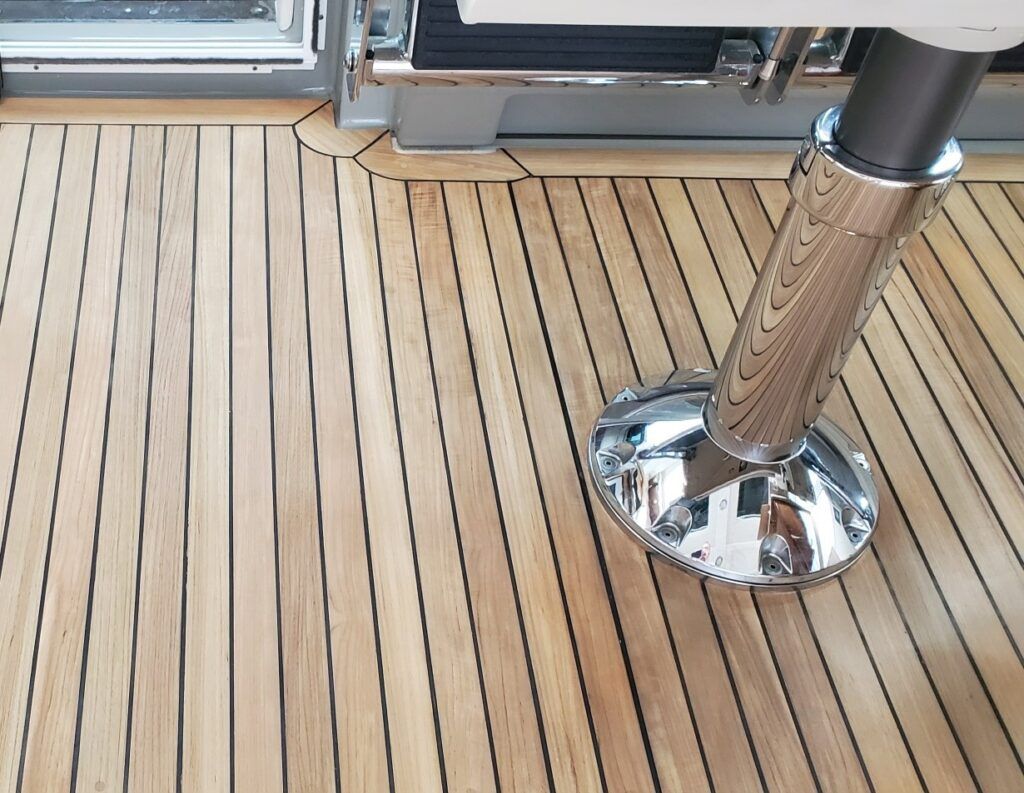
After Sand-Out — Looks New!
HOW TO SAND
If there is enough teak thickness and caulk seam depth for a successful deck sand-out, an optional first step is to wash the deck with Teakdecking Systems’ ECO 100 or 300 Teak Cleaners, to create a dirt-free and pollution-free surface.
As the deck dries, inspect the deck for caulk seam failures. Wherever the edge of a plank stays wet after the surrounding deck has dried, this indicates a seam failure. Water has reached the side of the plank, saturating the wood more deeply. Another reason for lingering moisture may be that the caulking is proud on the teak. This creates a dam that prevents the water from running off the deck.
It might be impossible to determine whether the dampness is due to a seam failure or raised caulking. So, use a single-edged razor blade to shave the caulking down to deck level in that area and re-wet the deck. If the prior damp spot does not reappear, the problem was the elevated caulking. Sanding will remove the elevated caulking.
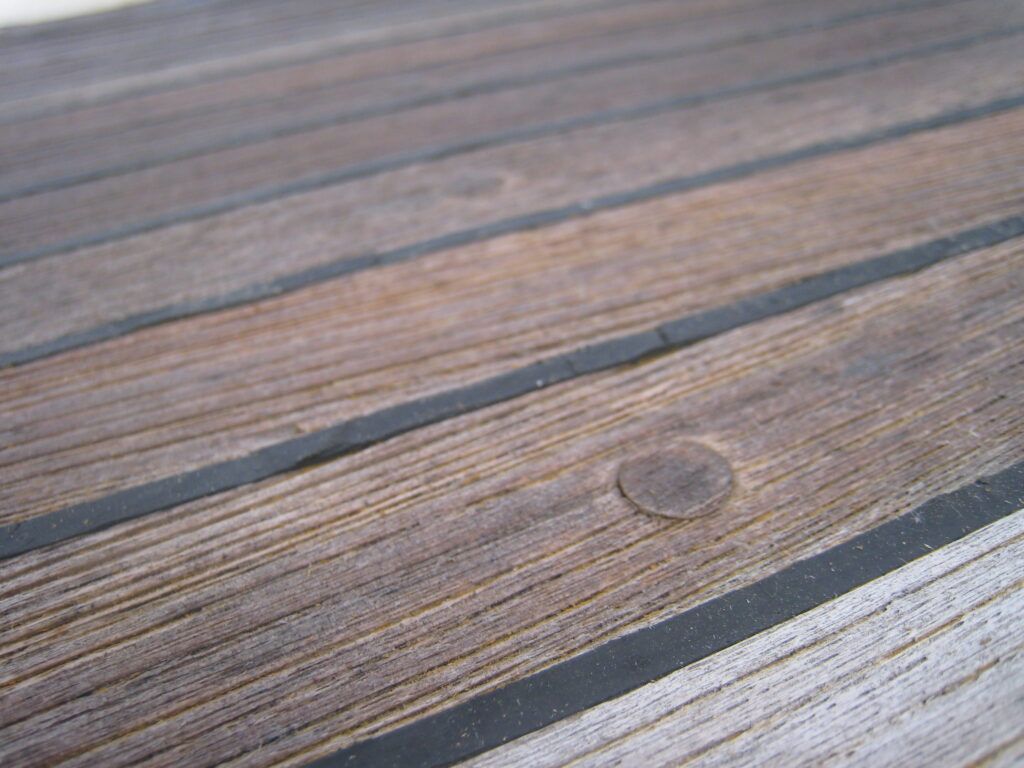
Proud Caulk — Determine if it needs to be cut down or replaced. Replacement is necessary if the caulking is loose or the seam holds water.
If seam failures appear, mark them with tape. Once the deck has thoroughly dried, make any necessary caulk seam repairs before the general deck sand out.
NOTE: Sanding removes raised caulking; so some technicians prefer to make repairs after sanding, but these repairs must be performed carefully to prevent damage to the newly sanded deck.
Sanding carefully and slowly are the keys to beautifying rather than destroying a teak deck.
TOOLS
VACUUM AND SANDERS
Sanding creates a lot of dust, so a shop vacuum is necessary. Dust attachments on the sanders will reduce the volume of loose dust resulting in a cleaner workspace (and fewer cold stares from the crews on neighboring boats). However, dust gathering is not as important as having the right tools for the job. So do not be lured into using the wrong sander because “it doesn’t make a mess.”
Belt sanders and orbital (jitterbug, palm, etc.) sanders should only be used on a teak deck by highly skilled professionals. Amateur users can easily catch an edge and gouge the teak or create unwanted grain patterns. Orbital sanders work well on the teak. BUT they will only wiggle the caulking rather than cutting it down to the deck surface.
The best sander(s) for resurfacing a teak deck are a 5-6” Dual Action (D/A) random orbital sander and/or a 7” grinder for larger projects. Equip both sanders with the yellow soft pads that accept either Stick-It or Hook-n-Loop sanding disks. These two types of sanders cut in a circular pattern removing caulking down to deck level. If the deck has many corners, a Fein Multimaster sander, or similar, may be helpful.
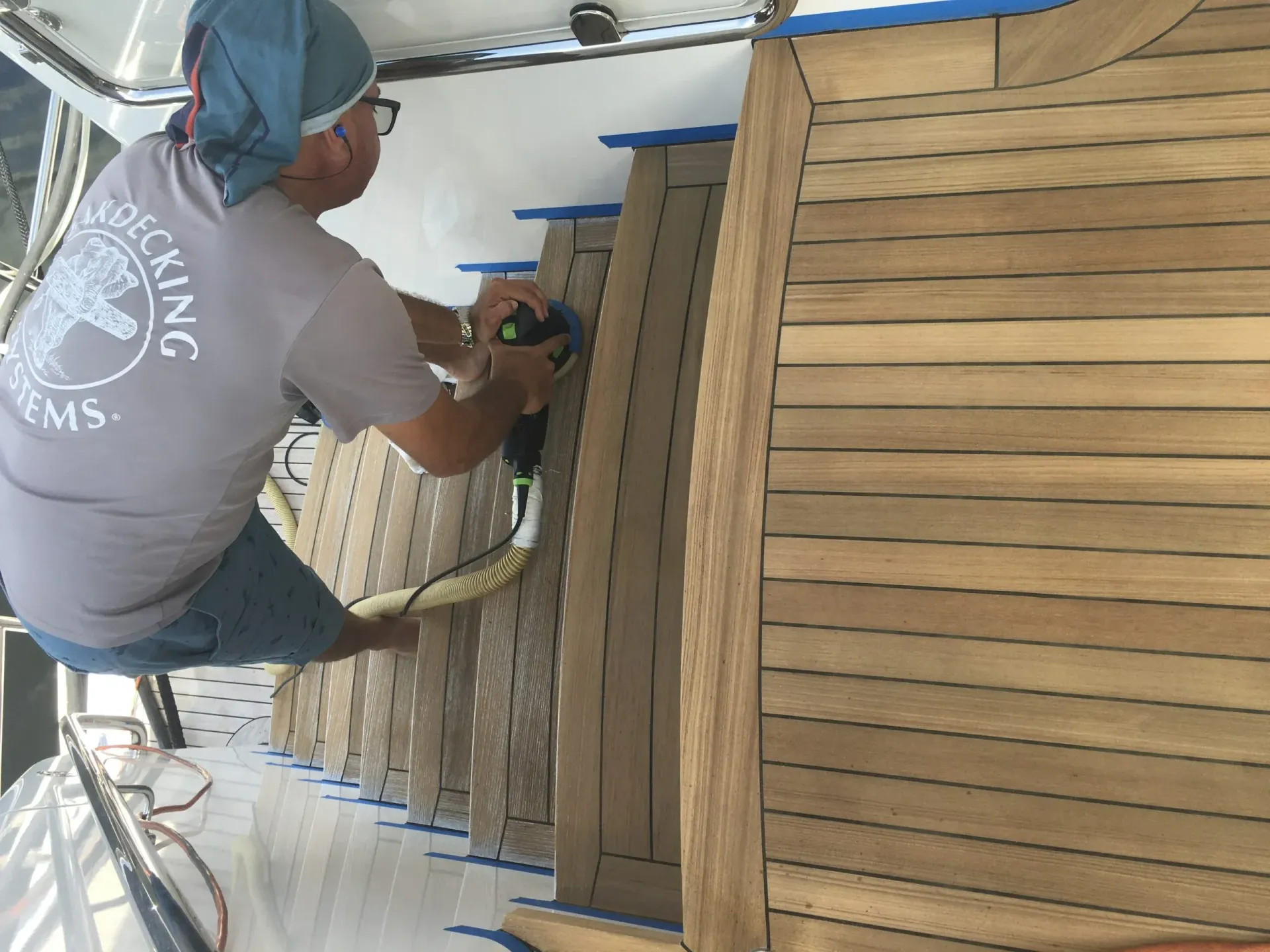
Teakdecking Systems Employee Sands Steps
Use a hand sanding block or the final sanding because there will be edges that the power tools cannot reach without causing damage. Finger sanding is taxing, and it is not suitable for the deck because it creates dishes and grooves. So, using a sanding block in locations not easily reach by tools yields the best results. Remember: Teak is a naturally oily wood, so gumming of the grit is common.
More than likely, gel-coated, varnished, or painted surfaces are adjacent to the teak. These finishes could be easily damaged if nicked by either a D/A sander or a grinder. So, it is a good idea to temporarily mask those surfaces needing protection. Thin (1/8”) plywood or sheet metal are suitable for this. Cardboard is not.
Teak is one of the softer of the hardwoods, so it is easy to quickly sand away a lot of teak when too aggressive. So, start with 80 Grit and lightly sand. Adjust pressure, speed, or sanding grit to refine the rate of removal. ALWAYS keep the sander moving over the surface. Pausing in one place will cause the sander to create a depression by removing excess material.
For badly weathered teak, it may be necessary to first use coarser 60 grit disks, but only IF there is enough teak deck thickness. Sanding to an 80-grit finish provides the extra needed traction on a heeled and pitching deck, while power vessels are often finished with 100 -120 grit for a smoother surface. When sanding, keep the disks as flat as possible without losing control of the sander. More surface area is used, avoiding gouging the deck with a disk edge. Sweep back and forth, keeping the sander constantly in motion. If the sander does not have a vacuum attachment, then vacuum frequently. Vacuuming will keep the dust under control and the work area clean, enhancing visibility.
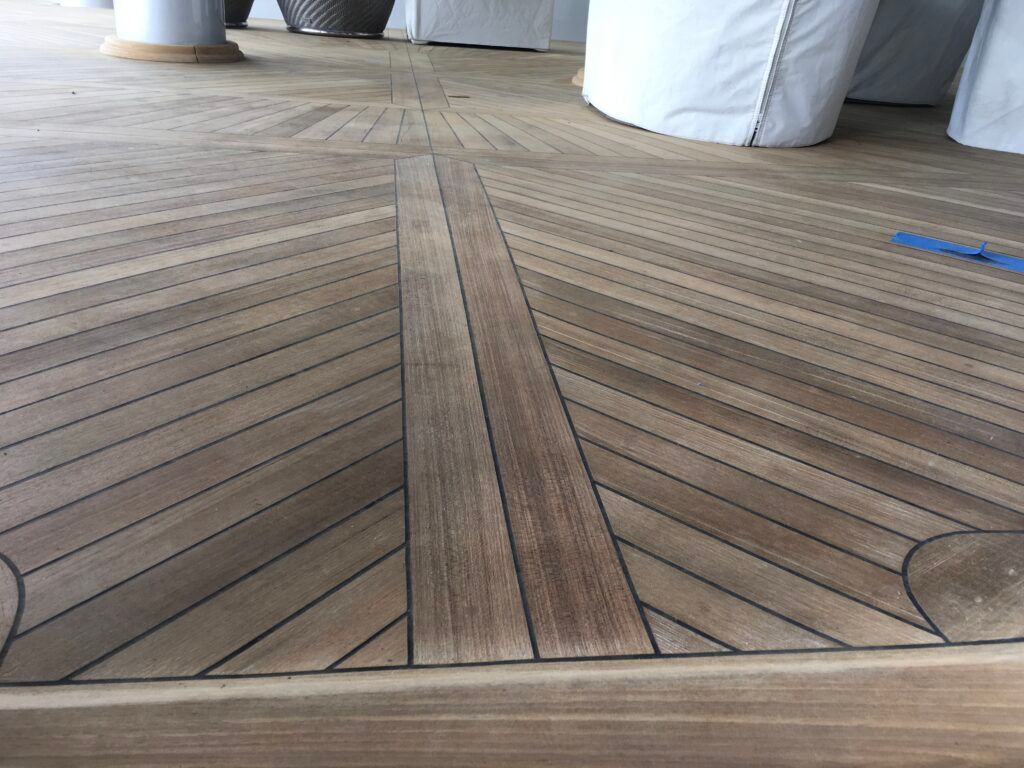
Before Sanding
Before starting the sanding process, decide how much sanding is necessary.
If the deck is relatively thick, with plenty of caulk seam depth, but there are ridges in the deck easily felt with a thumbnail, it is okay to sand the deck surface to the desired smoothness, keeping wet deck traction in mind.
If the caulk seams are shallow and the teak planks are not thick enough to be recut deeper, then sand off proud caulking. This step will give the teak a light dressing. This sanded finish helps shed water a bit better, extending the deck life while determining a replacement plan. Keep in mind that weathered planks will continue to hold water on their surface, accelerating the decomposition process.
WHEN TO STOP SANDING A TEAK DECK
Whether a teak deck is thick or thin, here is a way to gauge when to stop sanding:
A noticeable color change occurs to the sanded teak. The original golden color returns while, at the same time, the teak in the grooves is still the weathered silver color. Watch the silver diminish while sanding. When it is gone, the deck is smooth – STOP SANDING! Wash the deck and check the seams.
NOTE: A Professional move is to stop a little sooner, leaving a silver hint on the planks to avoid over-sanding. During the last step of thoroughly wash the deck to remove the residual mixture of teak and caulk dust. If well sanded and washed, the little bit of silvering will disappear.
While sanding a teak deck, it is possible to discover that some deck areas are in good shape, while others have reached the end of their useful life. Teakdecking Systems often works with owners and captains to replace specific deck areas rather than replacing entire teak decks. When doing a partial replacement, the new decks will have a custom design to match the existing decks on the vessel.
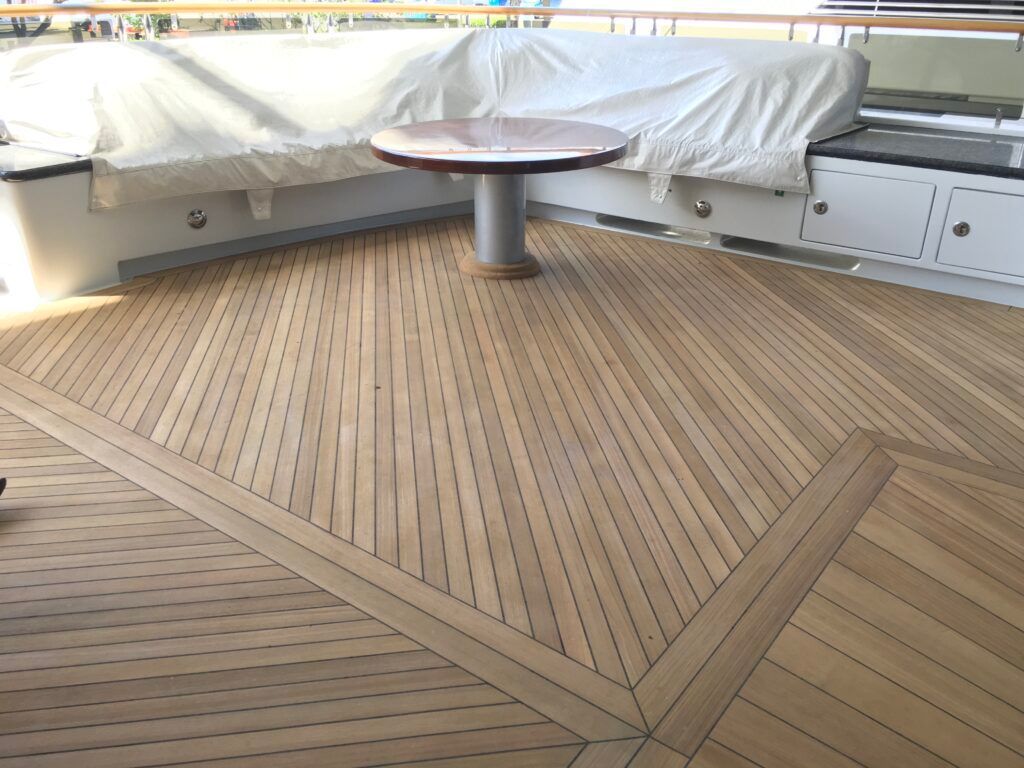
After sanding
For questions about sanding, please contact our team of experts:
yacht.services@teakdecking.com
941-756-0600
ALL PRODUCTS
